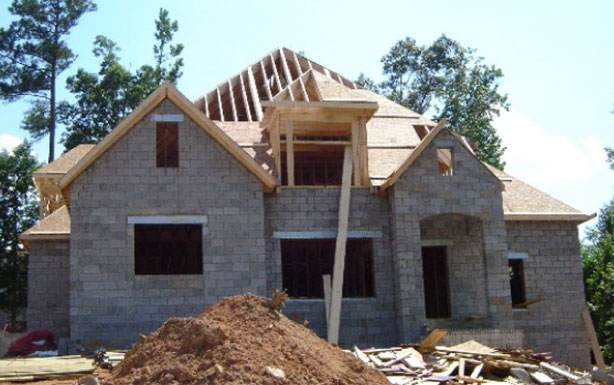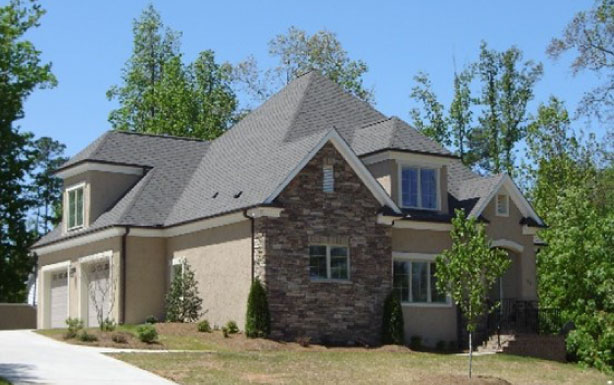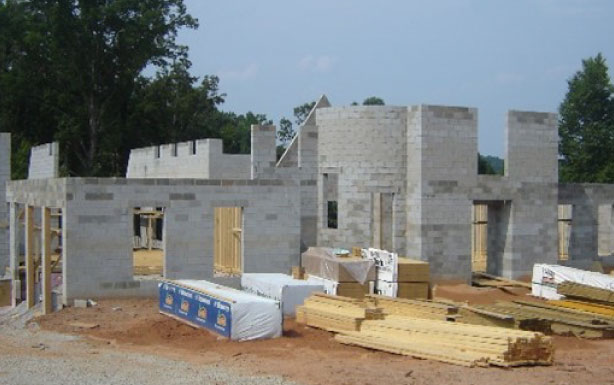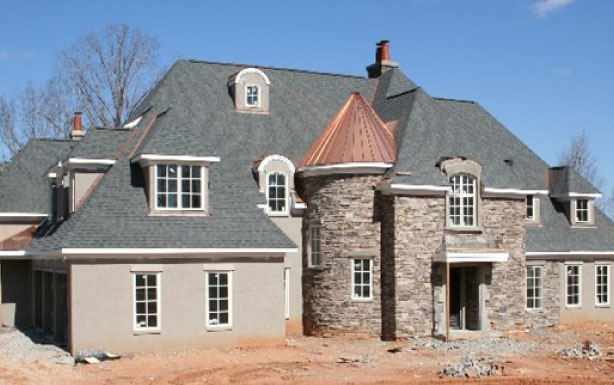
Shaver House Concrete Masonry Framed Construction
Courtesy of NCMCA & Ryan Saver
By James Cain, President of SCMA
The SCMA is a true believer in learning from the past. In late 2021, the SCMA plans to relaunch the Concrete Masonry Frame Home Program with the use of technology while educating the consumer on the advantages of building with concrete masonry. Revisiting this program started with making sure we get the full picture of past program challenges, the advantages concrete masonry offers, as well as understanding the challenges in today’s marketplace. The SCMA reached out to the National Association of Home Builders (NAHB) to understand their position on whether Concrete Masonry Framed Homes are still viable in today’s residential landscape.
For better or worse, wood framing remains the dominant construction method for single-family homes in the U.S., according to NAHB analysis of Census Bureau data. For 2019 completions, 90% of new homes were wood framed. Another 10% were concrete masonry framed homes, and less than half a percent was steel framed. On a count basis, there were 814,000 wood-framed homes completed in 2019. This was an 8% gain over the 2018 total. As noted above, steel-framed homes are relatively uncommon, with a total of only 3,000 housing completions in 2019, which was the same as the 2018 tally.
However, concrete masonry framed homes experienced accelerated growth. The total was up 46%, increasing from 59,000 completions in 2018 to 86,000 in 2019. The gains over the last 10 years are more striking. From 2009 to 2019, the concrete-framed total increased by 258% and the market share doubled from 5% to 10%.
Some of these gains came from a shift in geography. Concrete masonry framed homes are more common in the south. In fact, such homes made up 17% of all homes completed in the south. But the shift to home building in the south was not the only factor, as the share of all homes in the U.S. built in this region increased from 50% in 2009 to just 55% in 2019. The national gain for concrete masonry framed housing was also driven by share gains within the south itself, rising from 8% in 2009 to 17% as mentioned above.
The SCMA is extremely optimistic for future generations of Concrete Masonry Framed homebuyers in many locations. Let us be clear, we are not going after the trac builder market and the subdivision market but rather the custom home buyer market. It is the people who are looking to upgrade or make the long-term investment in the lives of their family and home.
With launching this program, the SCMA will need to address several avenues to be successful.
- Educating & training builders on building concrete masonry framed homes
- Educating & training masonry contractors on building concrete masonry framed homes
- Educating consumers on the benefits of concrete masonry to demand a concrete masonry framed home from builders. This way the consumer will help drive the market.
Many homeowners assume that a concrete masonry home will cost considerably more than a comparable stick-built house. There are several areas you can save money with masonry.
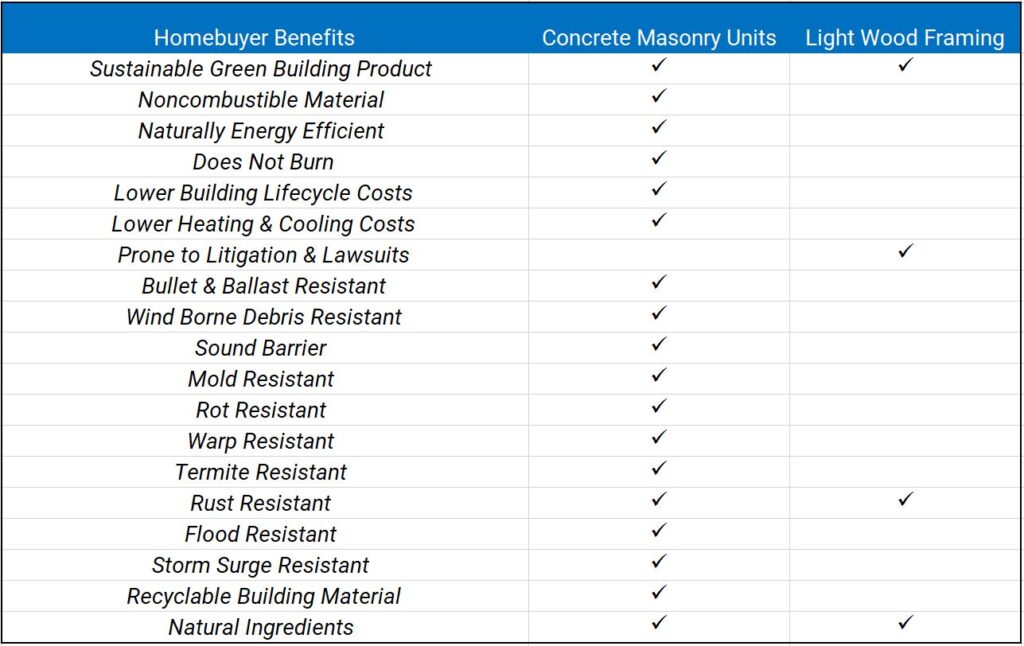
Other important benefits you cannot put a price tag on include increased safety from disasters and comfort from even temperatures throughout the home, improved air quality and decreased outdoor noise levels. All this equates to better quality of living due to a healthier, safer environment.
The future homebuyer really has no clue on what is behind the wall of their future home. This is where the SCMA educating the public comes in. Reaching the consumer is the way to drive future demand. Most builders are not going to offer to build a concrete masonry framed home so it’s up to the consumer to be educated on concrete masonry and why what is behind the wall is so important to the health and safety of their family.
Common Myth
The most common myth about concrete masonry is that it is too expensive. At a time when the country is reeling from the COVID induced recession, the price of lumber has skyrocketed by 170% in a matter of months bringing the average price to $800 per thousand board feet. The total of a new multifamily home has increased by a stunning $6,107. With wood prices soaring, new home prices have jumped in some markets between $25,000 – $46,000 due to lumber.
Fire Safety
Consumers today are under this presumption of safety when they buy a home. They assume it is built with the safest and best materials on the market. However, they do not know it is built to code minimums and most times not with noncombustible material like masonry. Research shows that 30 years ago, you had about 17 minutes to escape a house fire. Today it is down to three to four minutes. The reason: Newer homes and the furniture inside them actually burn faster, a lot faster. One of our initiatives inside our concrete masonry framed program is to help educate families on the dangers of building a home with inferior products rather than masonry. It is important they understand that most builders are not building with the buyer’s safety in mind but rather their own profit margin. According to the U.S. Fire Administration, there was 1720 civilian home fire fatalities reported by U.S. news media between January 1, 2020 and November 9, 2020. We can, and must, do our part to help educate future homebuyers.
20-25% Cost Savings – Heating & Cooling Costs and Equipment
At the SCMA, we have been working to build a platform based of real facts to help future homebuyers. Let us put the facts into perspective on heating and cooling costs. Concrete masonry framed homes provide 20 to 25 percent savings in annual heating and cooling costs. Below is a great example:
Energy Study From October 2019 – October 2020
Ryan Shaver Masonry Framed Home
- 2900 sq. ft.
- Heating and Cooling Monthly Average $110.92
- Less than $3.50 per day!
The SCMA understands that how much you will save depends on many factors including the thickness of the walls, the number and types of windows and doors in your home, ceiling insulation, the size and efficiency of the heating and cooling equipment, and the climate in the region where you live. Moreover, concrete masonry construction allows the installation of smaller heating and cooling equipment, which can save you hundreds or even thousands of dollars in upfront costs.
25% Insurance Savings
The SCMA found talking with the NAHB most consumers do not even know they can recoup their investment in a concrete masonry home with big savings in insurance costs. Many agencies offer discounts on homeowner policies of up to 25% for concrete masonry homes because of their resistance to fire, tornadoes, hurricanes, and earthquakes. This all starts with education. To put that into perspective, if your insurance costs run $2500 a year, then you can save roughly $625 a year. Over a ten-year period, that is $6,250 which allows you to put this money back into other life investments.
Low Maintenance Costs
Costs to maintain a concrete masonry home through the years may be considerably lower due to its resistance to dry rot, pests such as termites and other forms of degradation. Let us take a quick look at exterior painting. A 2,300 sq. ft. single-story wood siding home will require around two painters to paint the entire house and will take a minimum of three days to complete for a rough average of $3,000 depending on the market. Experts say you should paint wood siding every 5-7 years. So, a homeowner can spend another $9,000-$12,000 in maintenance costs over a 20yr. period!
Other Tangible Benefits
The many benefits of concrete masonry framed homes are invaluable. From the SCMA’s viewpoint, there is many we will include in our overall program from fewer warranty claims, better structural integrity, sustainable green building products, termite resistance, wind borne debris resistance, sound barrier, mold resistance, rot resistance, rust resistance, locally sourced materials and storm surge resistance to name a few.
So, what are the steps the SCMA will be taking to get this program launched in 2021? We will:
- Create a presentation on Safer Environments with Concrete Masonry Framed Homes
- Research the Florida Residential Program with Matt Sitter in December 2020
- Create a builder training program to train builders on concrete masonry framed homes
- Create a masonry contractor training program to train masons on concrete masonry framed homes
- Research angles to help promote the advantages of concrete masonry frame homes to the future homebuyer.
- Build out a page for Concrete Masonry Frame Homes on the SCMA website showcasing homes
- Create a listing for each state a listing of approved builders and contractors with the five-state footprint. This will be a resource for consumers so they can find approved builders and contractors in their area. The SCMA has enlisted the support of a recognized concrete masonry framed homebuilder to help train future builders. The SCMA also plans to partner with a masonry contractor to help train future masonry contractors on concrete masonry framed homes.
To move the needle on concrete masonry, we must have complimentary programs in both commercial and residential markets. The SCMA has a long-term strategy for this program. We understand this will be a marathon and not a sprint. We know it will take many resources in the marketplace to help drive future demand for masonry. The SCMA Concrete Masonry Frame Home Program has the support from the producers, masonry contractors, builders and even the NAHB. The program will be driven by the demand from the consumers who will be educated and start demanding quality construction by building concrete masonry framed homes. Even with the checkoff program looming there is a great chance this program could be picked up nationally to create more residential promotional awareness across the United States. The future is bright for the concrete masonry world and the SCMA is excited to begin building with safety and security in mind, one block at a time!
Examples of Concrete Masonry Framed Homes:
Courtesy of Palladium Homes Inc.
